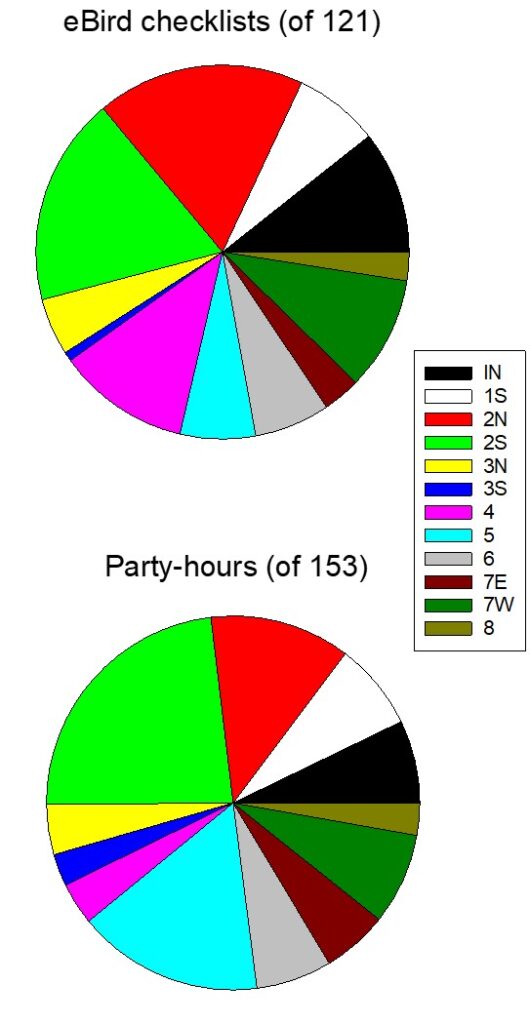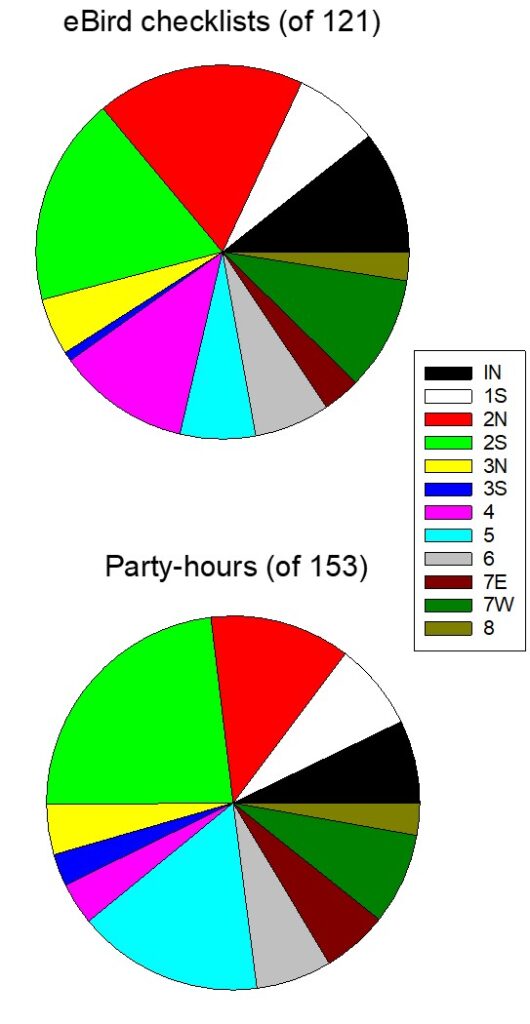Columbia’s 2020 Christmas Bird Count is a Success!
by John Besser
Saturday, December 19 dawned clear and sunny, providing a lift for the dozens of birders who rose early to participate in the CAS Christmas Bird Count. Unfortunately, the day soon turned overcast, humid, and cold, making the day difficult for both birds and birders. Despite the unpleasant weather, eBird checklists rolled in steadily throughout the day and by Sunday evening we had received 122 checklists from our 15-mile count circle (Figure 1).
Our final species list reached 96, with a total of 52,413 birds counted (Table 1). Neither total was exceptionally high for this count. Few rarities were found, a few expected species were missed, and we did not find the enormous flocks of blackbirds that have swollen some previous CBC tallies. Half of our count consisted of over 25,000 Mallards! Numbers of other waterfowl were relatively low, but counts of Snow Geese, Canada Geese, Gadwalls, and Green-winged Teal all exceeded 1,000. Songbirds that exceeded the 1,000 mark were European Starlings, Red-winged Blackbirds, Dark-eyed Juncos, and the reliable Northern Cardinals. This year’s irruption of winter finches was represented by almost 500 Pine Siskins and greater than usual numbers of Purple Finches.
The Columbia CBC benefits from our large pool of skilled birders wiling to bird under unfavorable conditions. The 12 count areas in our count averaged 10 checklists representing over 12 party-hours for each area (Figure 2). All these totals are presumably lower than normal because of the Covid-19 pandemic. The result of all this birder effort is that we got remarkably good coverage of our count circle. Seven of our 12 count areas had between 47-50 species (Figure 3). Of course, not all birding areas are created equal, and no other area came close to the 73 species and over 25,000 birds reported for Area 5 (Eagle Bluffs and environs).



As expected, Area 5 also had the longest list of species that were not found in any other area — 13 species, consisting mainly of waterfowl (Table 2). But several other areas also had unique species, including special finds like six (!) Short-eared Owls at Bradford Farm (1S); less-glamorous finds like Black Vultures (2N) and Brown-headed Cowbirds (1N); and species that are usually present during relatively warm weather, like Eastern Towhee (1S; a ‘count-week’ bird), Brown Thrasher(8), and Marsh Wren (6).
We think the CBC was a big success, despite the limitations posed by the pandemic. Many thanks are due to the legion of CAS volunteers! We wish everyone a Happy New Year with good health and good birding!


